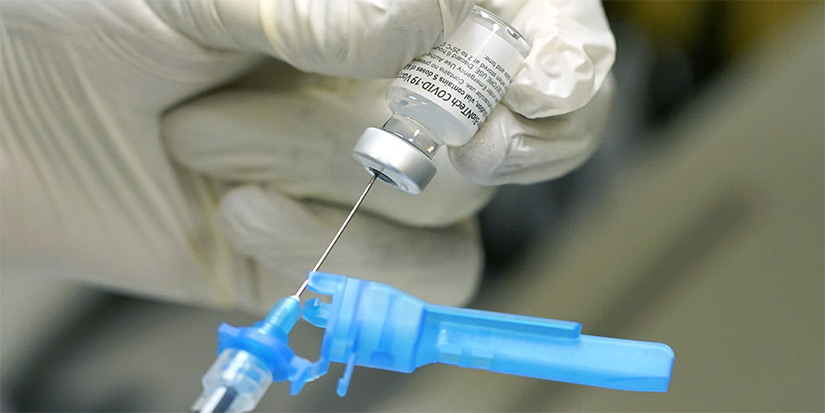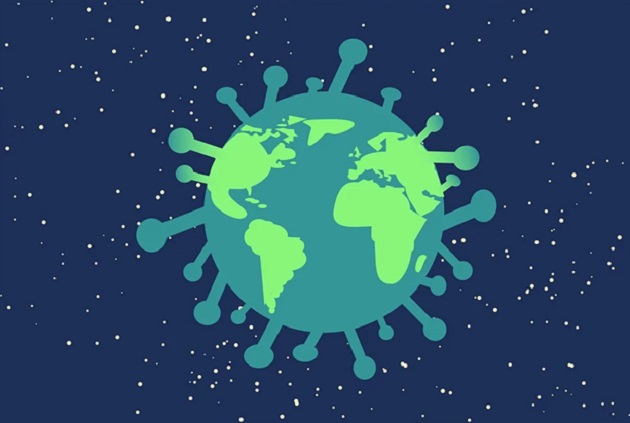
What’s the Worst that Could Happen?
“Never tell me the odds,” said Han Solo to C-3PO as he deftly navigated through the asteroid field. They made it. But The Empire Strikes Back was a movie. SARS-CoV-2 is real.
In financial markets, “tail risk” refers to something low-probability but harmful enough that you have to plan for it.
A good analogy would be flying on an airliner (remember those?). Your plane is unlikely to lose cabin pressure. But if it does, you’ll be glad they provided oxygen masks.
A few weeks ago, we thought vaccines would bring the pandemic under control in 2021, at least in developed countries like the US. Experts still think that’s likely, but it’s not guaranteed.
There are other possibilities… and some of them are bad.

Source: Pixabay
Pesky Precautions
We all have our fantasies for post-pandemic life. Mine is to write about the economy without including an epidemiological outlook.
That day will come, but for now, the economy depends on the virus. Both have cloudy forecasts.
The best case: Vaccines, combined with previous infections, immunize enough of the population to let the previously normal economy return. We’ll travel, gather, and meet face to face without fear, and without pesky precautions like masks.
That could happen, maybe even by mid-year, if everything goes perfectly. More likely it would be late 2021 or early 2022.
Unfortunately, the vaccine campaign is not off to a good start. In the US, according to the CDC vaccine tracker, some 3.2 million people had received both their injections as of January 24. Another 18.5 million had received their first dose.
So 21.7 million Americans are now fully vaccinated, or will be soon. That’s a good start but it’s a long way from the goal.
And now we have another problem.
Enter B117
As I mentioned three weeks ago, a new and more contagious coronavirus variant is spreading. Actually several are, but for now the main concern is “B117” that first emerged in the United Kingdom.
Research is confirming that B117 does indeed spread more easily. Some data shows it may have higher fatality rates as well. That second part is still uncertain, but in either case, it’s bad news.
Labs can only distinguish B117 from the original version by fully sequencing each DNA sample. The US does this for less than 1% of cases. But Denmark sequences every case and B117 is growing exponentially there, even as overall cases decline.
If that trend continues, recent improvement may last only a few weeks before B117 hits in full force. It is already happening in Portugal. Its daily case curve was falling as of year-end, then quadrupled in less than a month. Many are linked to the B117 variant. The UK, Ireland, and Israel had similar spikes.
Source: Our World in Data
We know B117 is spreading in the US. The question is whether vaccination progress can stop it. We’ll see.
The risk is serious. US hospital capacity is still stretched even after some recovery this month. It could be catastrophic if B117 causes the kind of spike seen elsewhere, both in lives lost and economically.
But there’s an even worse possibility… a true “tail risk.”
This idea that vaccines will save us rests on several assumptions.
- One, as noted, is that we can vaccinate people faster than the virus reaches them. That remains to be seen.
- A second assumption is that the vaccine will both protect people from COVID-19 disease and prevent them from spreading the virus.
- Another one is that the vaccines work against new variants, and will confer immunity that lasts long enough for the virus to recede. Scientists think so, but only time will tell.
- Yet another assumption is that the millions previously infected (and who may not even know it) now have some degree of long-lasting immunity. This is critical because it reduces the number of people we need to vaccinate.
On that last point, a Brazilian city’s experience should concern us.
Source: Pixabay
No Immunity
Manaus, deep in the Amazonian rainforest, has about 2.2 million people. COVID-19 hit it hard last year, overwhelming hospitals and cemeteries. Antibody studies showed, as of October 2020, about 76% of the population had been infected.
At that level, Manaus should have had herd immunity. Instead, it is now enduring an even worse outbreak. Hospitals are running out of oxygen and one healthcare worker called the situation “a complete massacre.”
How is that possible?
Well, the studies that showed so many people had been infected could have been wrong. Maybe the sample group wasn’t correctly randomized. Statistics aren’t perfect. Labs make mistakes.
But it could also mean…
- Virus patients’ immunity waned after a few months, or
- It didn’t protect them from new variants.
That’s the tail risk.
If surviving this virus doesn’t leave people with long-lasting immunity, or doesn’t protect them from new variants, we will be totally dependent on vaccines against a constantly-evolving virus. We might never reach herd immunity.
Now, that wouldn’t necessarily mean doom. We’d find ways to cope. But economically, it would mean growth won’t resume as fast as many presently think.
Giant asteroids are rare but they happen. That’s why dinosaurs disappeared.
Failure to reach herd immunity probably wouldn’t be an extinction-level event, but it would be a serious long-term global challenge. So we might want to think about it.
See you at the top,
Patrick Watson
@PatrickW
Scroll down for comments.
